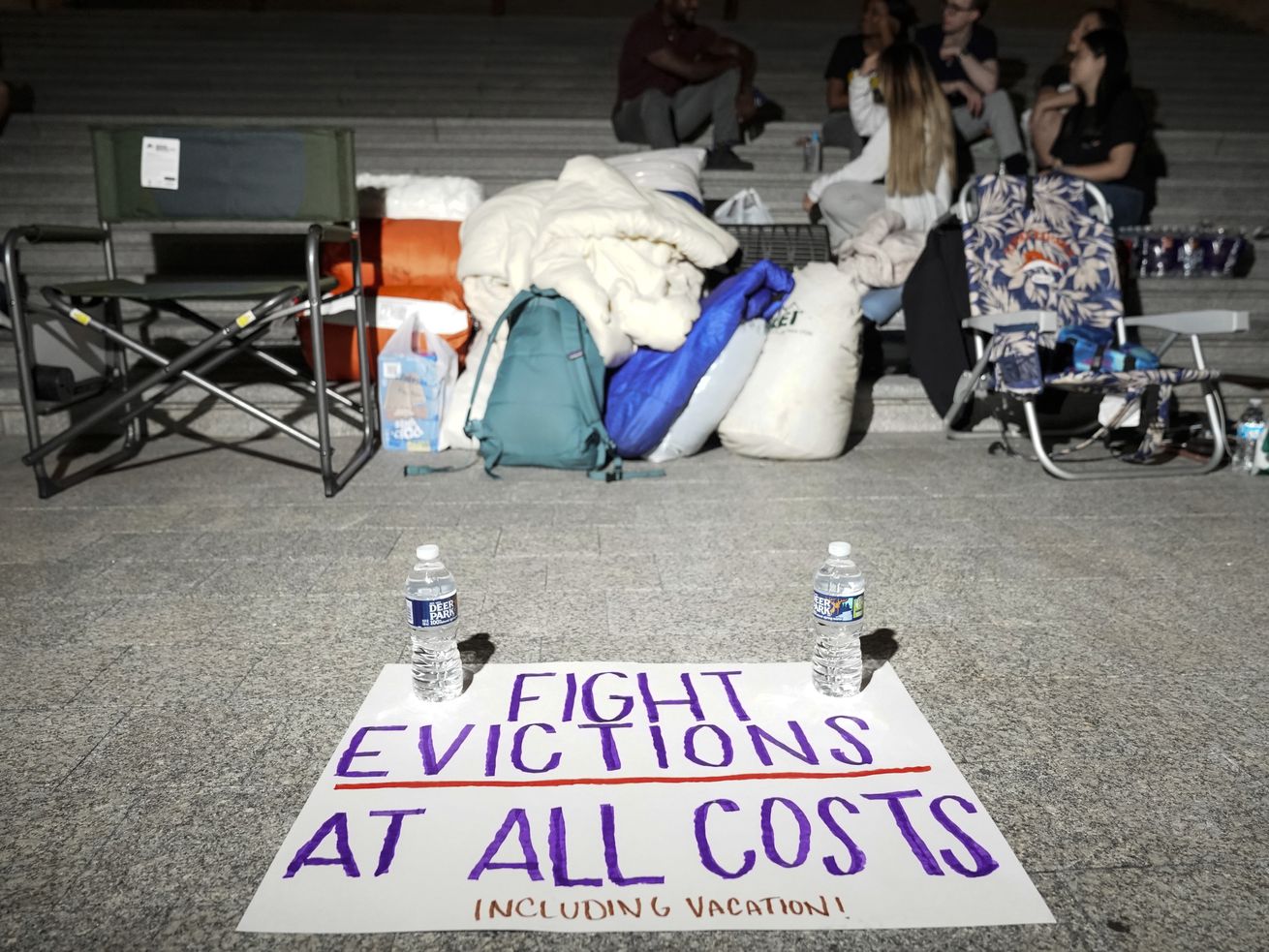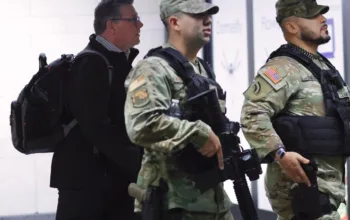Only $3 billion of a $45 billion relief package has been distributed to renters.
It’s August 1, and rent is due. That’s a big change for many Americans who had been unable to pay rent but were protected from eviction by a federal moratorium. Now, those protections are gone.
Due to widespread job loss and the health risks of the Covid-19 pandemic, many renters in the US faced difficulty making their rent payments every month when the pandemic began in early 2020, and the federal government stepped in to prevent people from getting evicted in the midst of it. As part of this response, the Centers for Disease Control and Prevention instituted a moratorium in September 2020 that prevented landlords from evicting their tenants regardless of whether they could pay their monthly rent in full or at all.
Last month the moratorium was already on borrowed time, as the Supreme Court had warned that it would not extend the renter protection past the end of July. Several justices including Justice Brett Kavanaugh supported this. “In my view, clear and specific congressional authorization (via new legislation) would be necessary for the CDC to extend the moratorium past July 31,” wrote Kavanaugh. The Biden administration did challenge the Supreme Court decision on Thursday, two days before the program was set to expire, by formally asking Congress to pass an extension. But Congress would have had to pass new legislation to create an extension, and did not do so in time before leaving for an August recess, so the moratorium has officially expired.
No more eviction protection means paying late rent, money renters don’t have
This changes a lot for renters who now have to reckon with their landlords, some of whom have not received regular rent for almost a year. Renters are now required to pay any missed payments, and in some states the landlord is owed late fees for any late payment since the moratorium was enacted. Utilities are a bit of a gray area, but generally if the landlord is responsible for paying for a certain utility, in most cases they are not permitted to turn it off.
Rep. Cori Bush (D-MO) was at the forefront of the fight for a further moratorium extension. As a formerly homeless person who has also faced eviction in the past, she has been vocal about the need to extend the moratorium, and slept on the US Capitol steps on Friday night in protest. “I am dirty, sticky, sweaty. I still have on what I had on last night. This is how people will have to live if we don’t do something … they deserve human dignity and deserve for people that represent them to show up, do the work, to make sure basic needs are met today,” she told CNN’s Jessica Dean on Saturday.
It’s 2 AM on Sunday. We haven’t slept since Thursday night. The eviction moratorium expired, so we’re now in an eviction emergency. 11 million are now at risk of losing their homes at any moment.
The House needs to reconvene and put an end to this crisis.
— Cori Bush (@CoriBush) August 1, 2021
According to a study by the Aspen Institute and the Covid-19 Eviction Defense Project published in August of last year, nearly 40 million Americans were then at risk of eviction. People of color were, and still remain, disproportionately at risk as they are twice as likely to be renters. And the pressures that Covid-19 added just worsened the statistics. A June report by City Life/Vida Urbana and the Massachusetts Institute of Technology found that in the first month of Massachusetts’s state of emergency during the pandemic, 78 percent of eviction filings in Boston were in communities of color.
People with lower-income households are also more at risk, as they are less likely to have savings to pay rent and more likely to have been employed in Covid-affected industries. The moratorium aimed to help people like this who needed protection.
But although politicians like Cori Bush are fighting to bring the moratorium back, it was never a complete solution: renters would eventually have to start paying again whether their individual circumstances had changed or not, while landlords were also struggling to make ends meet without rental income.
In an attempt to remedy this, Congress allocated $25 billion in rental assistance in December, and in March, another $21.5 billion was added. This was a welcome relief to tenants and landlords alike, but the problem was in getting the money to the people who needed it, quickly. Confusion at the federal level about how to distribute that amount of money, and which of numerous programs would handle distribution, has also slowed getting the aid out. As Vox’s Jerusalem Demsas has reported, many renters in need of aid simply did not know that they were eligible for rent relief, and if they did, some were unable to provide the necessary paperwork because of their turbulent living circumstances, lack of formal documentation of their work, or nontraditional rental agreements.
Renters were unsure if rent relief money would get to them in time
While more than $1.5 billion was delivered to eligible applicants in the month of June, which exceeded the amount provided in all three previous reporting periods combined, only $3 billion of the total $45 billion allocated has been distributed, according to the US Treasury. Now that the federal moratorium has expired, at least four states — Massachusetts, Nevada, New York, and Oregon — have temporarily continued the ban on evictions against those with a pending rental assistance application. These state decisions will give renters time to receive their rent relief money when they might otherwise face eviction immediately. But renters in states that are following the expired federal moratorium face large sums of back rent and if they are unable to pay, possible eviction.
“There’s a lot of cases where tenants are getting evicted that have already been approved for rental assistance,” K’Lisha Rutledge, an attorney with Legal Aid of NorthWest Texas, told the Texas Tribune. “And their landlord knows that they’ve been approved, and they’re just waiting on the check.”
It might be easy to see landlords as the villains in this situation, but tenants aren’t the only ones struggling. Forty-one percent of all rental housing units in the US, and most of the affordable housing options, are owned by individuals, or “mom-and-pop” landlords, and the rent they receive from their tenants is often a large part of their own income. This means that the moratorium alleviated pressure from tenants by creating more pressure on landlords who still need to pay their own bills.
As Vox’s Jerusalem Demsas wrote:
“Losing more of America’s already dwindling affordable housing stock is a looming emergency that could be exacerbated if small landlords are required to act as the social welfare state without any financial assistance.”
The end of the moratorium potentially means money in landlords’ pockets, but there are still roadblocks. California is allowing landlords to get paid what they are owed from previous months without rent only if they waive 20 percent of the back rent. And some landlords have taken such a hit that they will be forced to sell their property, eliminating the opportunity to continue renting as a future source of income.
With over 50 percent of the US population vaccinated, it may seem that now is an appropriate time to end the benefits of the moratorium. But Americans who took a financial hit during the peak of Covid-19 or who lost their job may still need support. The rise of the Covid-19 delta variant is also a concern, as research has shown that evictions lead to a higher likelihood of Covid-19 infection and death.
Concerns about the delta variant were also the main reason for the Biden administration’s push for a moratorium extension. “Given the recent spread of the Delta variant, including among those Americans both most likely to face evictions and lacking vaccinations, President Biden would have strongly supported a decision by the CDC to further extend this eviction moratorium to protect renters at this moment of heightened vulnerability,” the White House said in a statement.
Based on the Supreme Court decision, and absent action from the Biden administration and Congress, this support is not enough. With over $40 billion in rental relief left undistributed, and a threat to public health still looming, renters are in danger once again.
Author: Maryam Gamar
Read More



